Krokbragd weaving has captivated my weaving heart and mind ever since I first laid eyes on it. So, what is it krokbragd? And how is it pronounced?!
Krokbragd is a twill weave structure that has Scandinavian origins. It is woven on 3 shafts and is weft faced (meaning the weft is dominant, covering most of the warp). It is pronounced “croak-brod”, or sometimes “croak- brog” or “croak bra-rg”, “crok -brog” or “crok – brag”. Clear as mud? 😂
I was thrilled when I discovered years ago that krokbragd could be easily woven on my rigid heddle loom. The idea of weaving this colourful, detailed cloth without having to use a bunch of shafts and without having to purchase extra tools was very appealing to me.
*This post contains affiliate links. Please see my disclosure policy for further information.
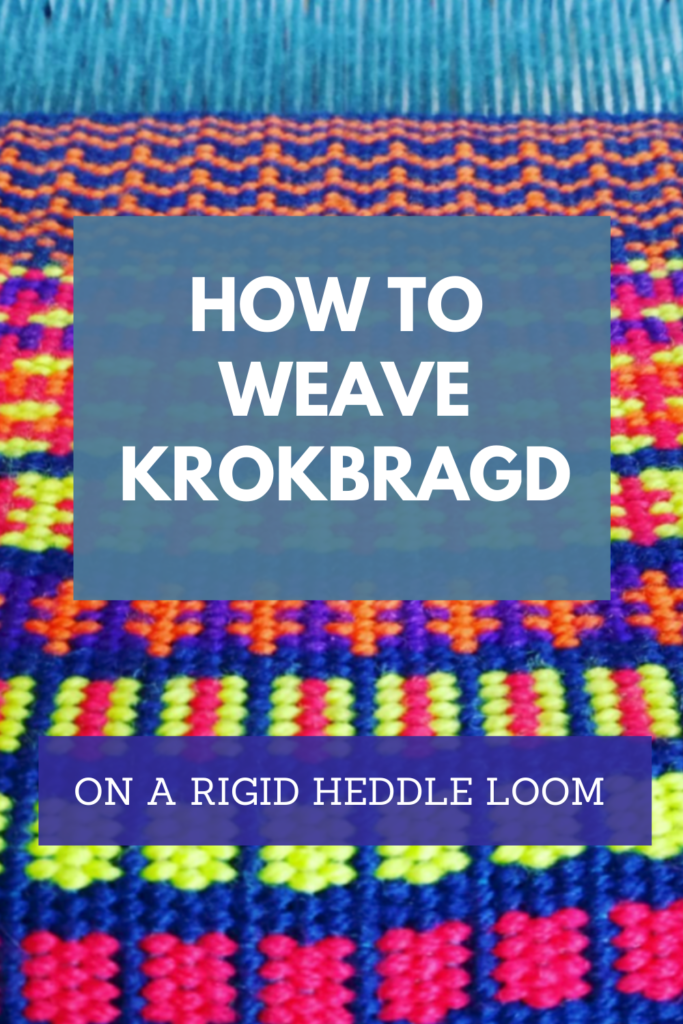
This weave structure produces bold and colourful patterns. These patterns can be built into little pictures as well. The weaving sequence has three simple steps and does not change, so the patterns are formed by changing colours. It’s quite magical!
The more you experiment with krokbragd, the more you feel that the possibilities are really endless. Choosing contrasting colours is one of the keys to success, as this keeps the patterns distinct. Another important consideration is to ensure your warp yarn is thinner than your weft yarn to ensure good coverage. The aim is to not have any warp yarn showing at all.

Because the weft is packed in, krokbragd produces a dense, heavy fabric. Historically, in Scandinavia, items with this structure were mainly heavy duty pieces such as chair and travel cushions as well as for warmth in the form of bed coverings. It was also used artistically, mainly for wallhangings. It is likely that some wallhangings served a double purpose of keeping the home more cosy, as hangings were sometimes used as door coverings to keep out cold draughts.
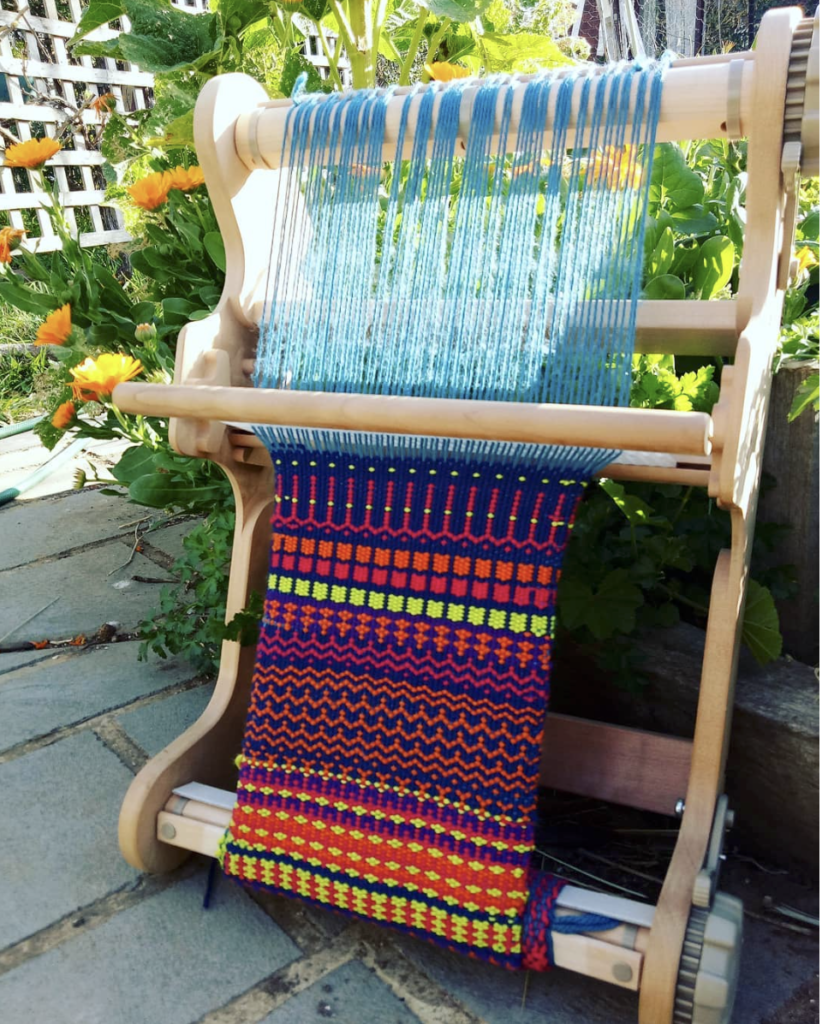
Once your rigid heddle loom is set up and threaded for krokbragd (which can be done either with a single heddle, pick up stick and heddle rod OR with two heddles), the same three step sequence is woven over and over, the only thing that changes is your weft colours. This is how you build patterns, by altering the colours. Three rows of weft passes equals one completed krokbragd sequence.
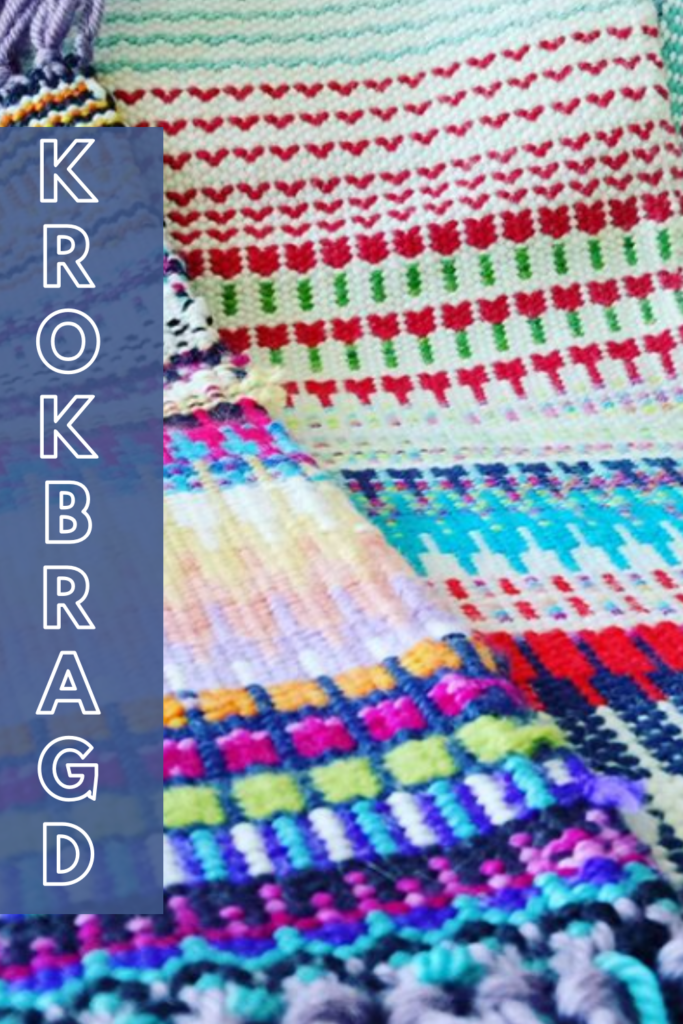
Let me give an example:
If I weave my 3 pick sequence in just one colour (lets say blue), I will have a solid row of blue once I’ve packed the weft down with my tapestry beater. The instructions would look like this: (“B” stands for blue)
- B,B,B x 1
If in my next sequence I introduce another colour, I will start building a pattern: (“Y” stands for yellow)
- B,B,Y x 1
Even better than trying to explain how it works is to show you how it works. This free beginner video will show you how to get started, give you the information you need to set up your loom and then give a basic krokbragd pattern for you to try-
Once you’ve mastered the basics, you can move on to some more adventurous, but still fairly simple patterning, like these little birds-
And one of my favourites, tulips!-
Once you have been through these videos you can start to design some of your own krokbragd pieces. There are a couple of ways to do this – either on the loom, as you are weaving or as a separate design, either on graph paper or using weaving software. I like both methods for different reasons!
Designing on the loom is very intuitive and relaxing, You can write down the colour changes as you go, that way if you find a design you love you can revisit it later because you have the instructions ready to go.
Designing off loom is also very beneficial. It allows you to plan out very specific designs to try on the loom. If this concept interests you, I recommend Debby Greenlaw’s book Krokbragd – How to Design and Weave, which I reviewed in this post.
Over at my Online Weaving School, there are three krokbragd classes available. The first one, is the Krokbragd Mug Rug Weave along, which is available to members only. This is a great class that provides instructions for different threading methods, so you can choose to use pick up sticks and a heddle rod or instead use two heddles.
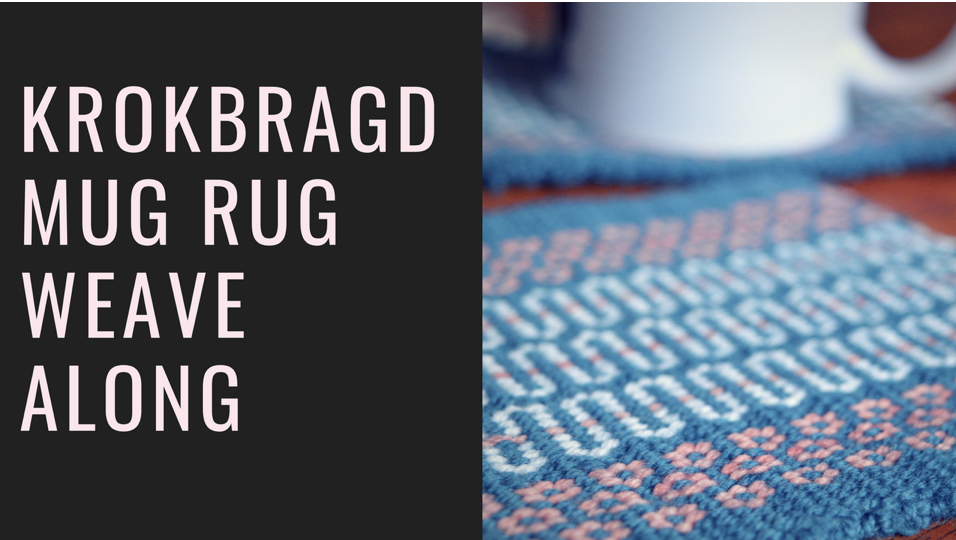
Then there is the Krokbragd Bag, which is a gorgeously fun and functional project. This class uses two heddles to achieve the three shafts, which is not as difficult as it sounds! You can see a roundup of some of student’s beautiful pieces from this class in this post.
And thirdly, my newest offering is Krokbragd 101, which is an “all you need” comprehensive course to get you weaving beautiful krokbragd.
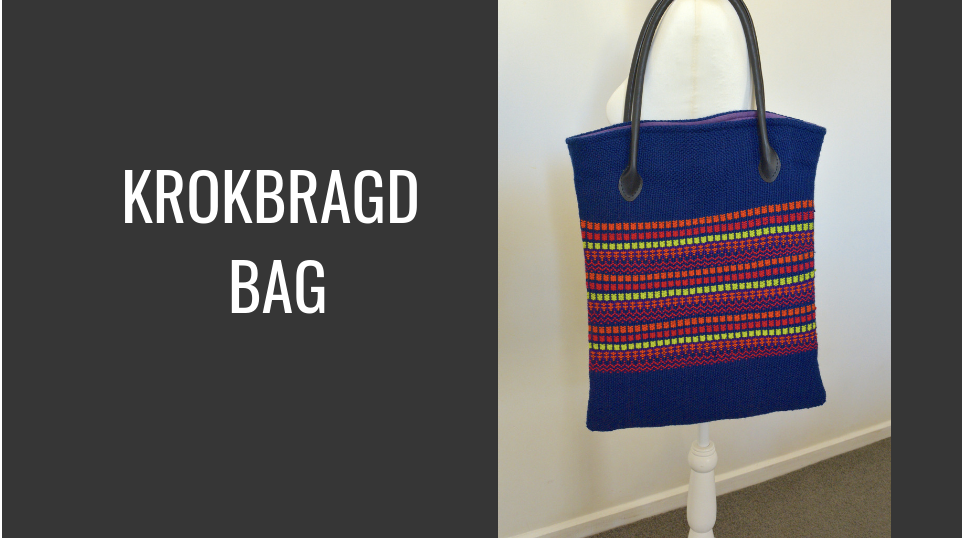
Krokbragd can even be woven on an inkle loom by turning the warp faced draft into a weft faced draft. I wrote about a Krokbragd inkle band I wove in this post.
Krokbragd is such a captivating and addictive weave structure, I hope you will love it as much as I do. If you have any questions or comments, please leave them down below, I love to hear from you!
Until next time…
Happy Weaving!


Maravilloso trabajo, veo tus vídeos una y otra vez para aprender, me encanta tejer en telar, gracias por compartir lo que sabes 🥰🥰🥰🥰
Thanks for getting back to me about Krokbragd. I am still trying Krokbragd and bought Debby Greenlaws Krokbragd Patterns. I tried for the first time with a double heddle.
Its warped with rug warp and woven with 4 ply yarn, but the warp shows up and there are no visible patterns, just plain stripes of colors. I’m so disappointed.
On your Krokbragd courses , do you teach the double heddle warping processes included in the course. Which course would you recommend so I can learn with double heddles as well as rod heddle.
Hi Linda,
The Krokbragd 101 class teaches two methods of setting up your rigid heddle loom – one of these methods is two heddles. Here is the link if you’re interested in taking a look-
https://kelly-casanova-weaving-lessons.teachable.com/p/krokbragd-101/?preview=logged_out
I just started krokbragd and love it! I’ve only done some flowers using a pick up pattern of A stick, pick up every other one with B stick picking up all the others.
I got my pattern from The Idea Book and the author stressed the A and B patterns were the same, but only the colors changed on each step. There were SO MANY patterns using the same A/B pattern and thev3 step sequence (WWB etc) that I was wondering if I do other patterns, do the pick up stick patterns change?
That is correct, the weaving sequence for 3 shaft krokbragd doesn’t change – the change in patterns is made by alternating colours 😊
Dear Kelly, thank you for your wonderful krokbragd-tutorials. I’m currently weaving a sample with two heddles and I couldn’t have done it without the clear instructions in your krokbragd bag course. I do have a question. I’m having a lot of problems with tension. When both heddles are up, it’t not to bad, but when one of the heddles is down, the upper threads are very slack. But because the lower threads are tight, I can’t increase the tension. Is there a way to solve this? Did I do something wrong when I warped my loom? I believe I had it pretty evenly tensioned when I wound on the warp. Or is my warping material te problem? I’m using a fingering weight cotton with almost no stretch. Would I have less tension issues if I used wool? (Weaving yarns are not easily available in my country – I’m from the Netherlands – but I’m considering using sock wool). My weft is a wool and polyester blend. Any advice you could give me in this issue would be much appreciated,
This is a very common problem when warping with cotton – it’s just so rigid that it’s hard to get a good tension in the down shed. There are some tips in this video that may help:https://www.youtube.com/watch?v=YERj4AdWe20&t=388s
Particularly using separators at the front and back beam, and using something to wedge under your warp at the back beam will help.
Thank you so much!